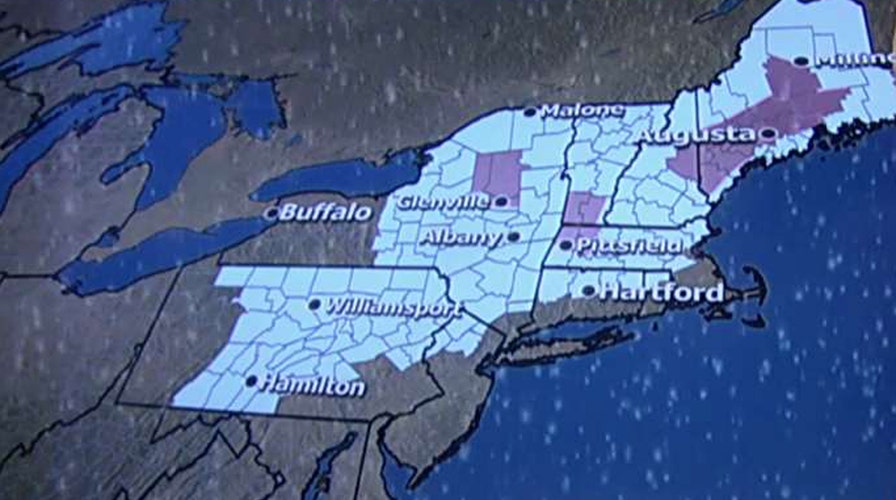Blankets of snow and driving rain forced hundreds of flight delays and cancellations and made for messy morning commutes on Monday as a storm that dumped several inches of snow on the Midwest made its way east.
The National Weather Service issued winter storm and winter weather advisories for parts of the Great Lakes and the Northeast overnight, which could affect millions of Americans.
Snow fell throughout northern New England Monday, triggering traffic jams on snow-packed roads and forcing schools to cancel or postpone classes.
Into early Monday, the storm had dumped more than 6 inches of snow on several states in the Midwest and Great Lakes regions, causing dangerous travel conditions.
It's a "slap of reality" after a mild November, National Weather Service meteorologist Dave Schmidt in La Crosse, Wis., said.
The National Weather Service forecast snow across Vermont, New Hampshire and Maine. Up to a foot could hit parts of southern Vermont. At least several inches had already fallen across the region by Monday morning. Some rain was expected to mix with the snow in southern New Hampshire.
The National Weather Service reported more than 10 inches fell in Lake Orion and Flat Rock. Parts of Macomb County got more than 9 inches.
Related News...
Snow generally cleared out of the Chicago area on Sunday night, though some snow fell on Monday morning in other parts of Illinois. The storms left Chicago-area freeways with patches of snow and ice, leaving dangers for drivers. The area received more than 6 inches of snow as of Sunday night.
Airports in Chicago and Detroit stranded thousands of travelers after more than 1,500 flights were canceled over the weekend, according to FlightAware.
The storm forced many schools to cancel classes on Monday and prompted the University of Connecticut to postpone some final exams.
The Ohio River Valley and Mid-Atlantic regions were expected to receive a mix of snow, freezing rain and rain through the day on Monday.
"For the rest of the day the best advice is just to stay off the road if you can, and otherwise go slow and give yourself more time to reach your destination," National Weather Service meteorologist Mark Steinwedel said. "If you don't have to drive or go somewhere, stay home."
Temperatures 15 to 30 degrees below average will follow the cold rain and snow in the coming days through much of the Midwest and East Coast, forecasters have warned.
The Associated Press contributed to this report.


